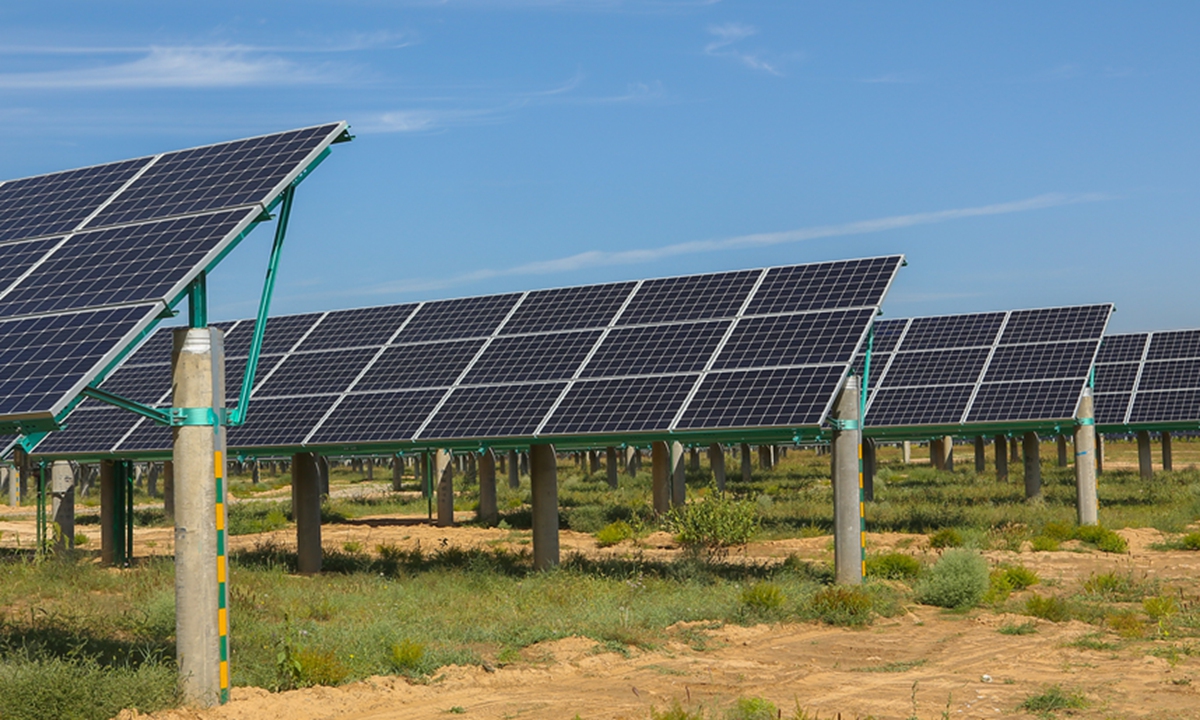
Solar panels at the solar power station of Panda Green Energy, in Datong, Shanxi Province. Photo: Courtesy of UNDP China
North China's Shanxi Province, a big fossil-fuel producing and consuming province, has been trying to diversify its energy use and expects a 15 percent reduction in energy consumption per unit of GDP in 2020 compared with 2015, the Global Times learned at the 2020 Global Top 500 New-Energy Enterprises Summit held in Taiyuan, Shanxi's capital city on Friday.Under China's target during the 13th Five-Year Plan period, China's energy consumption per unit of GDP must be reduced by 15 percent compared with 2015, a target that some regions couldn't meet, partly because of their reliance on coal.
Shanxi has been able to meet the target by discarding outdated coal production capacity and diversifying its energy mix, Wang Maosheng, deputy head of the Shanxi Energy Bureau, said at the summit. The province has been building safer, cleaner, more efficient and lower-carbon systems, Wang said.
Shanxi closed 106 coal mines and discarded 116 million tons of outdated coal production capacity from 2016 to 2019.
Also, Shanxi has completed clean heating tasks for nearly 5 million households since 2017, reducing the use of loose coal by more than 15 million tons, and the emission of sulfur dioxide by nearly 300,000 tons per year, Wang added.
As of the end of October, Shanxi's installed wind and solar power reached 14.4 million and 12.38 million kilowatts, climbing 35 percent and 230 percent, respectively, compared with five years ago. Wang also said that Shanxi's total installed electricity capacity reached 96.76 million kilowatts, and renewable power increased 30.61 percent.
Hu Yuting, executive vice governor of Shanxi province, explained that Shanxi has paid a lot of attention to diversifying energy-related projects such as increasing the use of wind and solar power, energy storage, geothermal energy, hydrogen, and natural gas, in a bid to develop more comprehensive energy systems.
"Shanxi will make more breakthroughs in the energy sector during China's 14th Five-Year Plan period (2021-2025), and contribute to assisting with China's carbon neutrality by 2060," Hu said.
He Manchao, an academician at the Chinese Academy of Sciences, said that Shanxi should play a pioneering role in promoting China's energy revolution by making the coal sector more intelligent, as more than 25 percent of domestic coal output is from the province.
Thomas Keller, president of Vestas China, a wind turbine maker, said that the scale of renewable energy "has increased tremendously" in recent years.
But coal will still play a significant role in China's energy mix for a long period. Bob Sherack, vice president of Komatsu Mining Corp, a mining equipment maker, told the Global Times that the coal mining sector should be more efficient by deploying more intelligent work faces.

